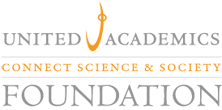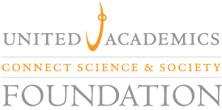
Australian New South Wales State Launches Single Portal Open Data Set Repository
he government of the New South Wales (NSW) has put a single portal data set repository to access government data. According to the statement fromthe finance minster Dominic Perrottet, the data.nsw.gov.au portal offers a new way for people to access data.
The new site, powered by the Open Knowledge Foundation’s open source software, has 353 data sets listed. The data set portal also incorporates various agencies case studies and examples.
The site has attracted record number of requests since it has been launched. For instance search in the NSW State Records jumped from 7129 in May 2013 to 17,229 in the same period in 2014.
The data set is in a format which can be easily accessible and searchable. Moreover, the state government formulated a strategy aims to promote public and companies to use publicly available geospatial data sets while further enriching them by adding geospatial data on the state’s social and economic data sets. The state government made the data set available and accessible under the NSW Government Information Act of 2009. It encourages agencies to make their data openly accessible in accordance with the Act unless there is a specific and overriding reason not to release the data.
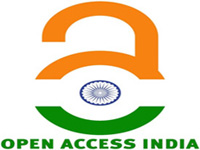
Indian research funding agencies have adopted an open access policy which calls for mandatory open access publishing of publicly funded scholarly output. The two agencies, the Department of Biotechnology (DBT) and the Department of Science and Technology (DST), both under the Ministry of Science, have released open access policy documents. According to the Telegraph, the documents remain in scientific community cycle’s circulation for comment till July 25, 2014. By endorsing open access publishing model DBT and DST joined other two Indian research funding agencies, Indian Council of Agricultural Research (ICAR) and Council of Scientific and Industrial Research (CSIR), which took similar policy decisions in the past. The decision of these national research funding agencies is expected to encourage similar agencies, research institutions and academicians to fully embrace open access movement and policies. Furthermore, the measure will boost scientific research and knowledge dissemination.
Research outputs are typically published on journals which obligate readers and librarians pay costly subscription fees. Nevertheless, making research funded by tax payer’s money freely available and widely accessible removes barriers and opens more knowledge and information windows for scientific and nonscientific communities alike. Open Access model is touted as an alternative to classic scientific journal publishing because the later keeps knowledge behind paywalls.
Open Access movement is reaching research funding agencies and scientific community in every corner of the world. Open access movement is no longer a cause that only few groups and individuals advocate for. The movement has become so successful that many countries and research funding agencies have come on board. The call for making publicly funded research output openly accessible is apparently coming from every angle. The European Union through its Horizon 2020 policy and the US are the major players in this regard. Developing nations are also following suit. Therefore, they have started embracing the movement and formulating open access policies which facilitate smooth implementation and transition.
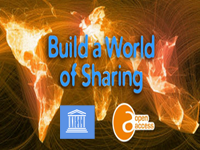
UNESCO Lunches African Open Access Project
UNESCO launches African Open Access (OA) project which primarily focuses on three sub-regions: East, West and North. The project will benefit scientific organizations, researchers, students of higher institutions, and science technology and innovation systems in various countries. It will be implemented in partnership with various universities and organizations. UNESCO allocated an estimated budget of 2.1 million USD for the project that will be implemented in 2014/16.
The project’s aim is to accomplish the folowing goals: examining an inclusive and participatory modality to implement Open Access to Scientific Information and Research, developing approaches for upstream policy advice, and building partnerships for OA and strengthening capacities at various levels to foster OA. During implementation the project will undertake survey on the possibilities of setting Pan-African OA standard. It will also organize international congresses on OA in Africa and release Open Access toolkit for promotion of OA journals and repositories. Moreover, the project will carry out policy research for evidence-based policy making, and developing a reliable set of indicators for measuring the impact of Open Access.
As a result of this project, UNESCO expects beneficiary countries to adopt OA policies, member states educational institutions use OA curricula for training librarians and young researchers. UNESCO also anticipates key stakeholders in OA will actively participate in OA knowledge-based community and create a regional, mechanism for South-South Collaboration.
According to UNESCO, access to knowledge is causing lapses in providing economic security, literacy, and creating opportunities for innovations in the continent. There is a widely regarded “Knowledge challenge”. Hence, UNESCO facilitates ways through which open contents, processes and technologies benefit people in Africa. The organization, likewise, endeavors to make sure that information and knowledge are inclusive and widely shared in order to benefit everyone in the continent.
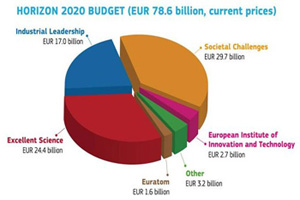
The European Commission (EC) inundated with a record number ofHorizon 2020 Research and Innovation applications. Just in the first round calls, the EC has received 16,000 applications. According to Robert-Jan Smits, Director–General of Research and Innovation speaking at the EuroScience Open Forum (ESOF) 2014, in Copenhagen, the number of applications received has shown growth of about a factor of nine. The Commission initially set a total of €15 billion for this round of calls. It received applications worth nine times what is allocated for, however.
The oversubscription rate of Horizon 2020 first round calls doubled that of the previous research program- the Seventh Framework Program (FP7). The success rate of Horizon 2020 applications is expected to fall to 11 percent. This is due to the surge in proposals. One reason behind driving the number of applications this time so high, Smits suggested, could be the cut in public research budgets in countries like Italy and Spain.
Horizon 2020 was designed in such a way that it brings industry back in the game. There are indications that the Commission has already registered notable success in doing this- 44 percent of the first round proposals came from industry. This is significant jump from where it was under FP7- 29 percent. Moreover, Horizon 2020 policy targets engaging Small and Medium-sized Enterprises (SMEs) companies and channeling research funding SMEs. In this front too, the policy appears to be working- half of all Horizon 2020 industry applications came from this sector.
Horizon 2020 first round calls attracted record number of women applicants. Under this program the percentage of women research applicants account for 23 percent. This shows 3 percent increase from the previous program (FP7). Rise in women participation in horizon 2020 is not only limited to proposal submission. Moreover, the percentage of women evaluating submitted proposals account for 40 percent of the evaluators. This meets the target set by the Commission.
According to Smits, research proposals oversubscription overwhelmingly came from health topics. Other oversubscribed topics are food, ICT and cyber-security.
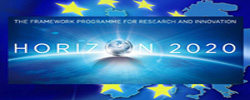
The European Commission Promotes Open Access
The European Commission will be seeking ways to promote open access to scientific research and open data, a movement known as Science 2.0. The announcement was made by Máire Geoghegan-Quinn, the European Commissioner for Research and Innovation.
The commissioner stressed the need to embrace Science 2.0, a movement which advocates sharing scientific information and collaboration in the era of digital technologies. Geoghegan-Quinn underlined the benefits scientific research harvest if it is in the hands of many people in a transparent, accessible and reproducible way. She emphasized that going fully open data and open access have “potentially far-reaching changes in the way we do science and research”. Science 2.0 advocates researchers make a greater effort to share information and embrace collaboration; both made easier by new digital data and network technologies.
Accelerated by new digital technologies, many things are happening in the field of scientific research and data collection. Yes we are in the big data era. According to SNTEF , 90 per cent of all the data in the world had been generated over the past two years alone. The commissioner said that the data came about as a result of thousands of hours worth research and experiments. This data should be free to access online, convinced Geoghegan-Quinn. She underlined the need to open library doors and eliminate online pay-wall barriers.
The commissioner pointed out that barriers to scholarly papers are falling in different parts of the world. Consequently, 50 per cent of research outputs published in 2011 in almost 40 countries are now made freely and openly available. This is good and encouraging news, indeed. Countries, institutions and researchers are embracing open access. Open access movemnet is achieving remarkable success. The EU Commission for Research and Innovation through its open access policy works to ensure research funded by the commission is publicly available and accessible. Source
